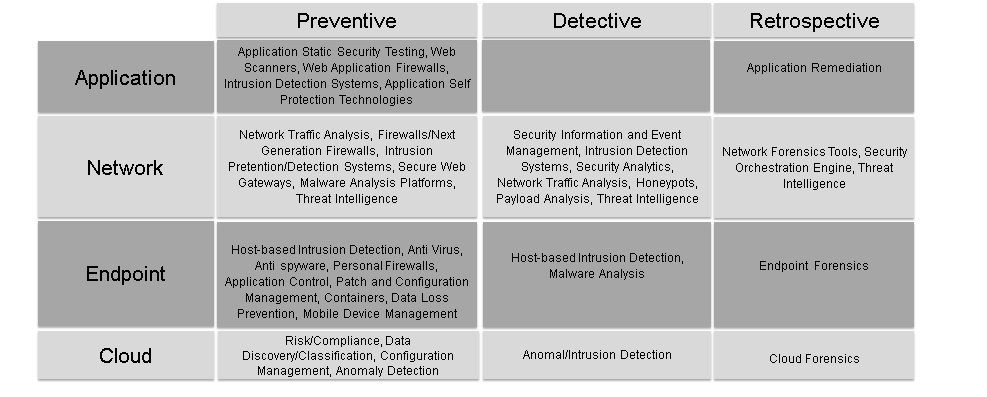This XSeed blog was written by former Principal, Marcelo Manjon, and originally appeared on Network World.
The spate of high profile cyberattacks have raised the awareness of cybersecurity to the board level and encouraged venture capitalists to pour money into this sector. In 2013 the industry received $1.7 billion of VC money across 240 deals, hitting a five-year high in both funding and number of deals, according to CB Insights. Today the cybersecurity landscape is comprised of nearly 500 companies, CB Insights says.
But many of these security tools are fragmented, and as a result it is often difficult to describe, categorize and compare various security tools given the numerous subcategories and new startups tackling one small part of the problem. In order to better understand this complex market and put into perspective the various solutions constantly coming to market, I would like to propose a framework we use at XSeed Capital to parse the market.
This framework is based on two dimensions: one captures the capability provided by the security technology, while the second is related to the layer of the IT stack where the technology is deployed. I hope you will find it helpful not only to review the current security landscape, but also to classify and compare the different security vendors in this complex market.

Capability Axis. This axis defines the three main functions cybersecurity solutions address:
* Preventive – capabilities that protect enterprises from getting compromised. Most of these technologies are primarily focused on identifying possible attacks and attempting to block them. One of the classic preventive technologies is anti-virus solutions that rely on pre-defined signatures for defense, which requires prior knowledge of the threat in order to block it.
* Detective – capabilities put in place to detect attacks that have bypassed the preventive capabilities. These technologies are focused on shortening the time to discovery and increasing the time to exfiltration (the time an attacker takes to steal sensitive data). These solutions typically aggregate and analyze a variety of data sources, including as many layers of the IT stack as possible (network, endpoint, etc.) and try to identify anomalies, malicious behavior and indicators of compromise or patterns of attack that were seen before. One of the most used detective technologies are Security Information Event Management (SIEM) tools.
* Retrospective/Forensics – capabilities to investigate and remediate incidents found by detective capabilities. These technologies are focused on reducing the threat remediation/containment time by automating the exploration of events associated with the breach and providing the respective protection measures. As an example, there are several network forensics tools that not only provide full-packet capture and storage of network traffic but also provide analytics and reporting tools for supporting incident response needs.
Layers of the IT stack axis
* Application: this layer includes a set of web application security technologies that cover every aspect of application security testing (static code analysis tools and dynamic testing tools), web application firewalls (WAF), intrusion detection systems (IDS) and application self-protection technologies. Some of the vendors in this category include McAfee, Blue Coat Systems, HP, Coverity, Acunetix, IBM, among others.
* Network: this layer includes a wide range of tools for network traffic analysis and malware analysis, including firewalls (FW/NGFW), network intrusion prevention/detection systems (NIPS/NIDS), security information and event management systems (SIEM), secure web gateways (SWG), honeypots, threat intelligence feeds/platforms, security analytics solutions and advanced malware analysis platforms. Examples in the market today of companies who provide technologies for this layer are Palo Alto Networks, FireEye, Norse, Juniper Networks, Cisco, among others.
* Endpoint: this layer covers a variety of endpoint protection technologies from anti-virus, anti-spyware, personal firewalls, patch and configuration management, data loss prevention tools to more sophisticated host intrusion detection technologies (HIDS) that monitor, analyze and prevent malicious or anomalous activity on the host system (desktop and mobile), sandboxes /containers to isolate applications/web browsing sessions and endpoint forensics technologies. Some of the emerging solutions/technologies at the endpoint include Bromium, Invincea, Cylance and Crowdstrike.
* Cloud: security technologies designed specifically for cloud environments (storage and compute), including cloud data encryption, key management, risk/compliance, cloud data loss prevention, cloud malware/anomaly detection, security devops and cloud forensics. Startups providing technologies for this layer include CirroSecure (recently acquired by Palo Alto Networks), Evident.io, Threat Stack, among others.
With the proliferation of security tools and vendors and the ecosystem evolving so quickly, it is sometimes difficult to put into perspective the various solutions constantly coming to market. Hopefully this framework will help you categorize the players. If you have any thoughts or ideas to share, or if there are any categories or dimensions missing, I would love to hear from you via Twitter at @mpmanjon.
Disclaimer: XSeed Capital invested in CirroSecure.
